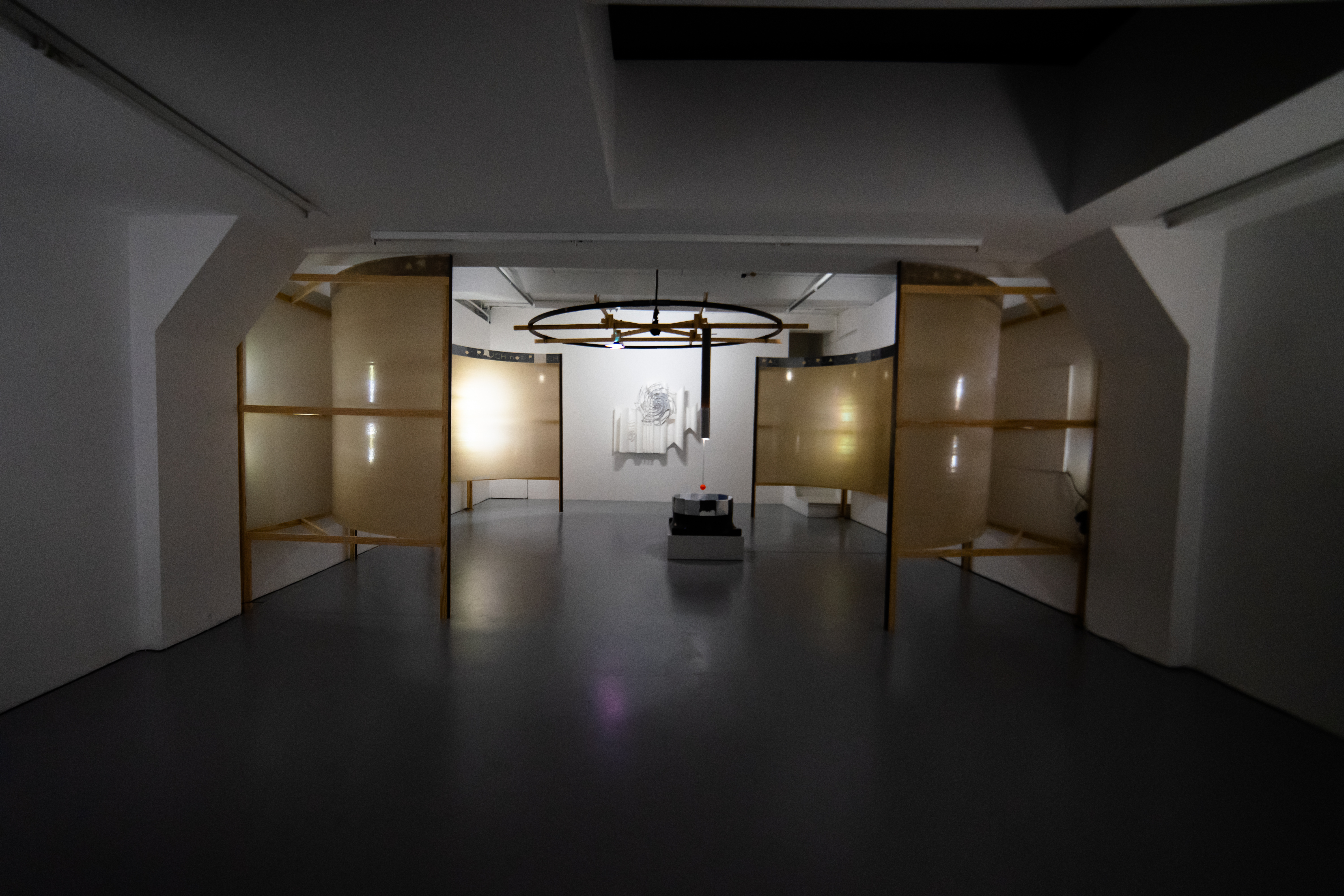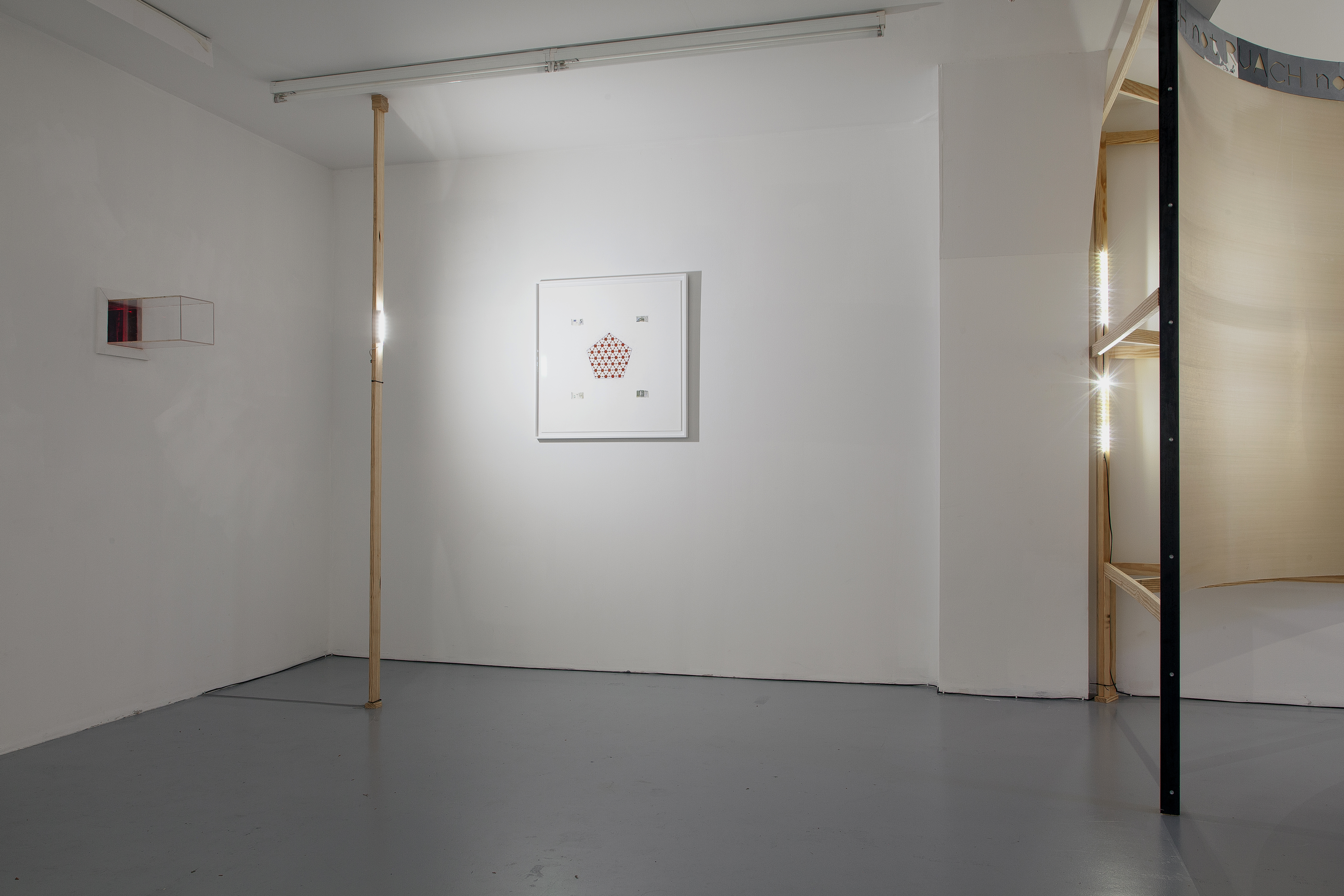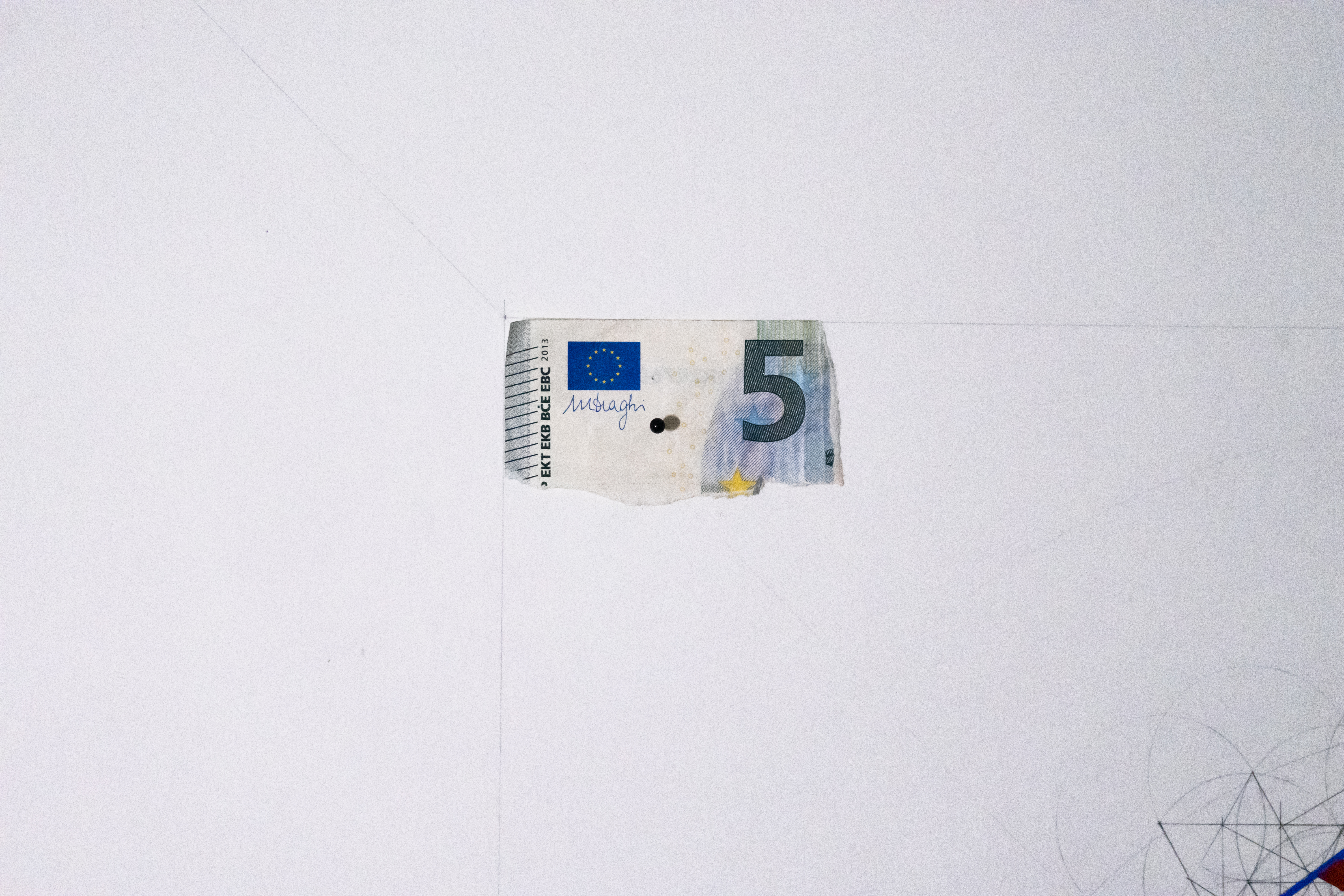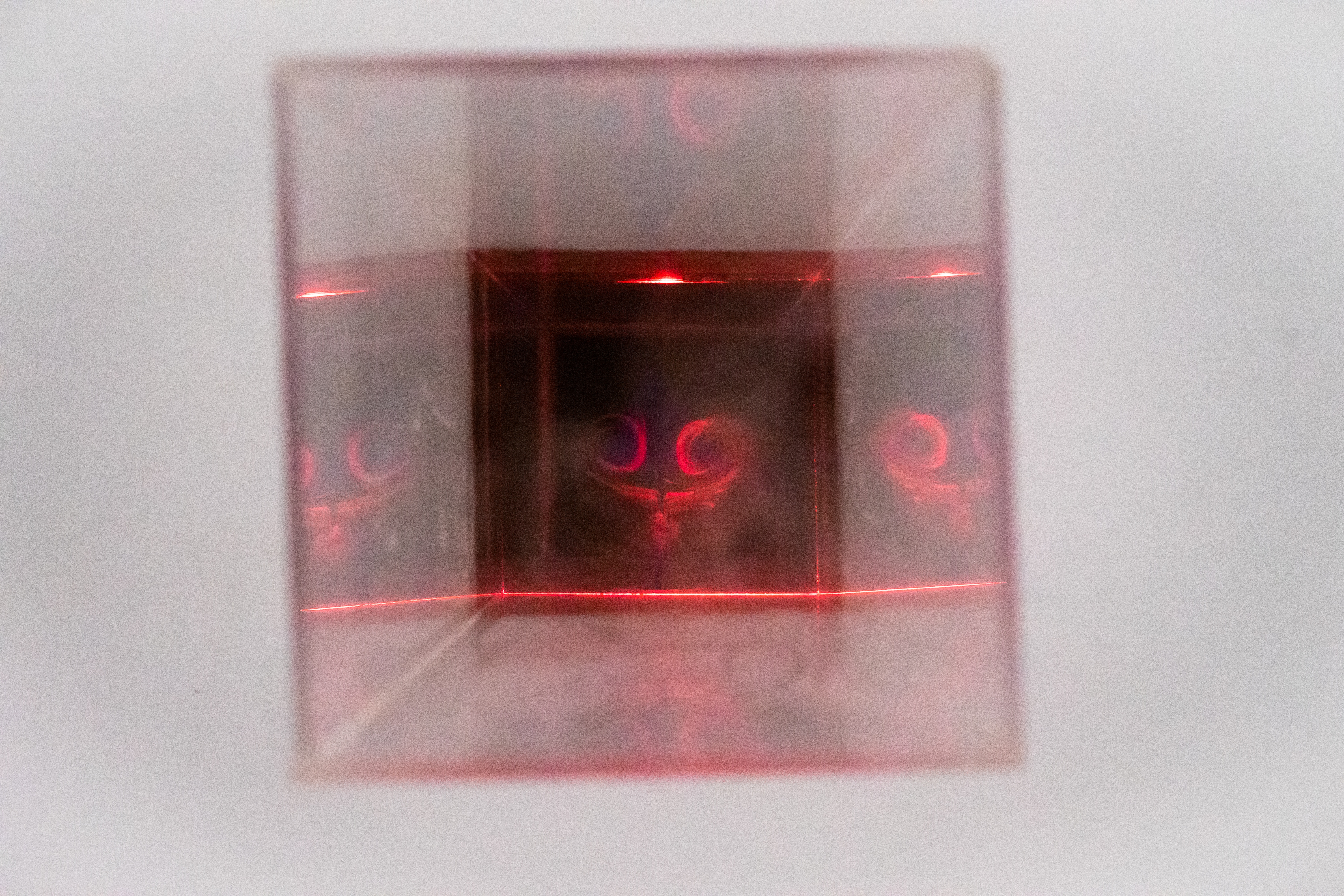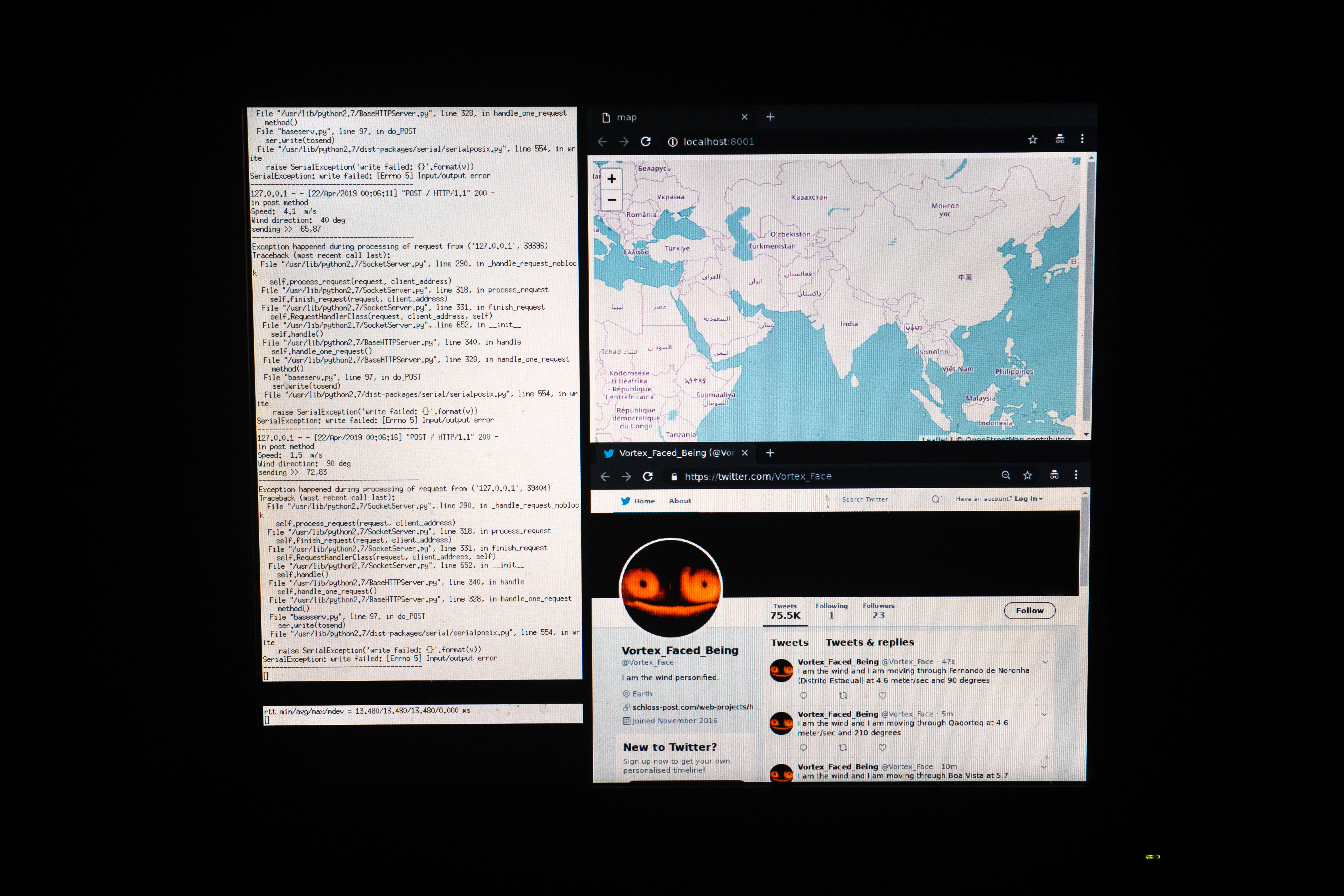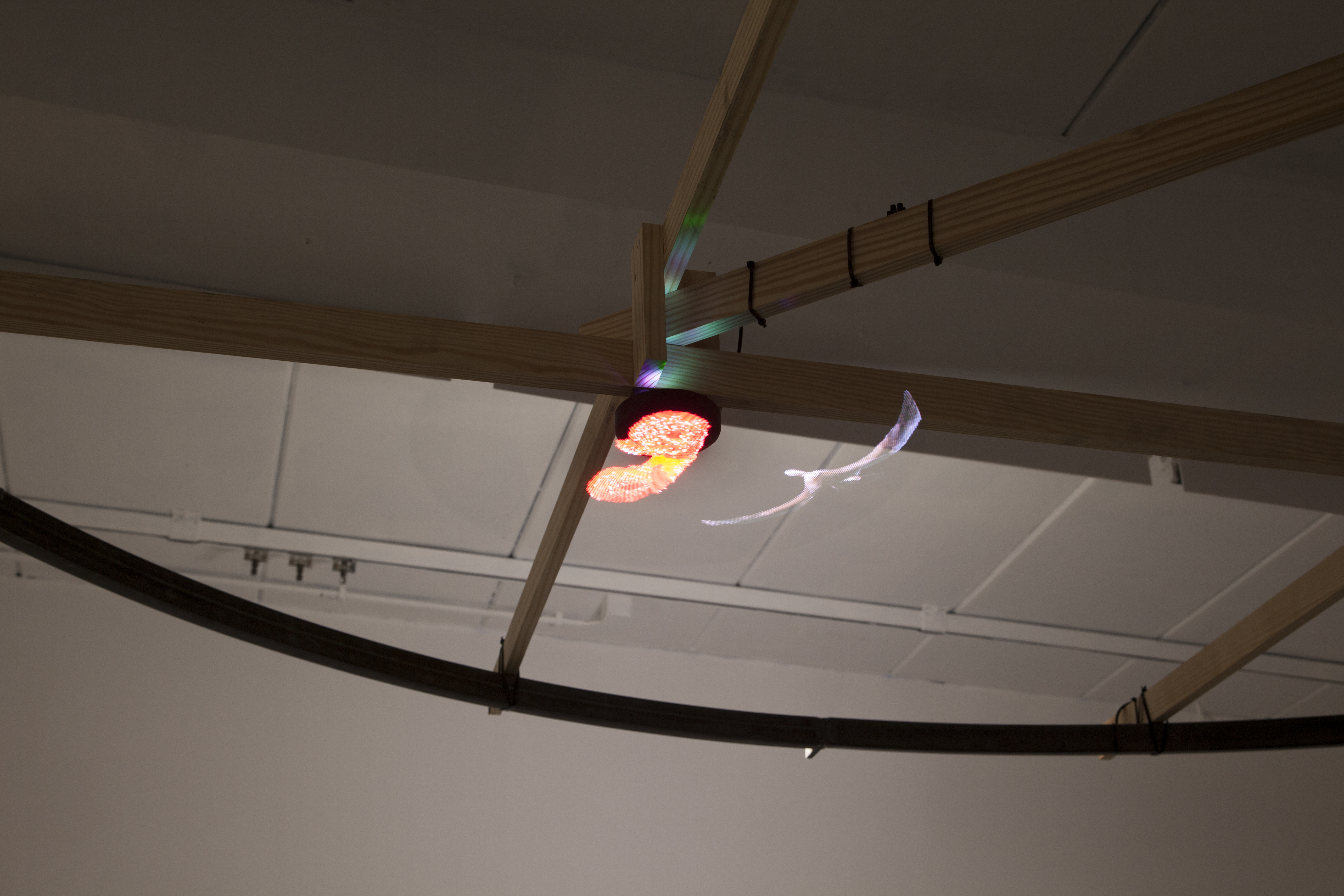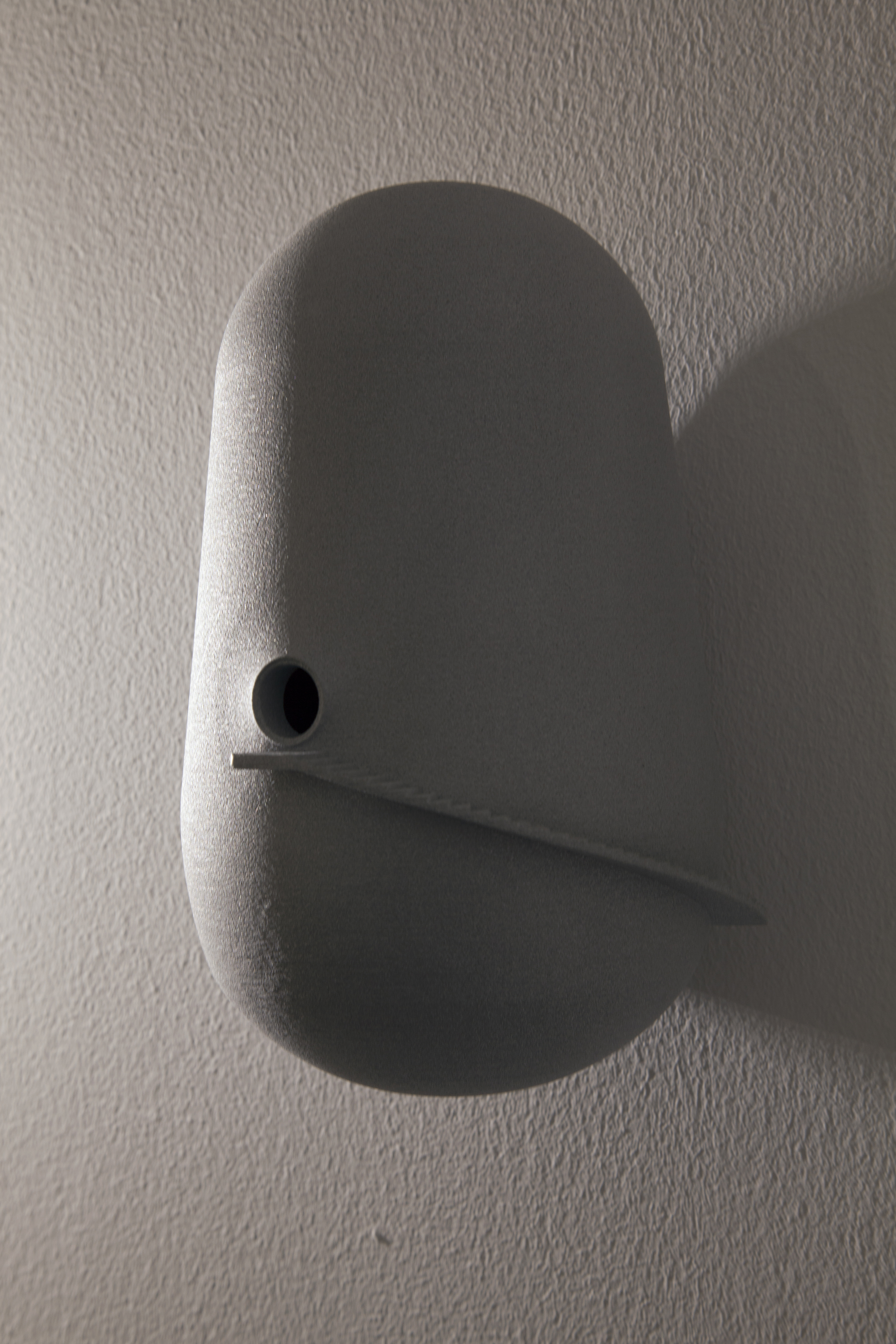Ruach not Rauch
Solo, 2019
Harlan Levey Projects
Brussels, BE
Catolog Text:
The wind constantly touches our surroundings, pervading our streets and weathering the buildings of our cities. It flows through and supports all living things; yet maintains power to destroy that which it permeates. Across many cultures, the wind is associated with creation. In the first verses of Genesis, a void of dark waters was said to precede the world we now know, but the breath of God, known as Ruach in ancient Hebrew, initiated the Universe. Ruach not Rauch presents as a small, controlled explosion of content about the wind, enacted both in the architecture of a sacred, myth-bearing space, and through the ornamentation of industrially produced construction materials such as steel, fiberglass, aluminum, and EPS foam. We find ourselves in an interstice between conception and death.
The Wind Egg, a five-year project preceding this exhibition, sought to test an ancient cross-cultural myth of the wind’s fertility using modern wind tunnel technology. The notion of a ‘wind egg,’ that is, an egg fertilized by Immaculate Conception, has its roots in 3,000 years of Arabic, Chinese, Egyptian, and Greek. Through the background literature, Ahmed discovered that wind eggs were most commonly known across cultures to be female animals that only reproduced with the wind, the most prominent of which was the vulture. Moving from antiquity to astrobiology, the Wind Egg proposes, what if animals and people could be fertilized by the wind, just as plants are? Could humans reproduce with the wind and without men? From this, a sequence of logical questions followed: Is the wind male? Does the wind have a face? Can the wind communicate with us? A team convened at the von Karman Institute in Brussels, Belgium, to conduct multi-staged experiment. The facilities included a vulture aviary, an aero-acoustic wing egg insemination wind tunnel, a wind egg incubation wind tunnel, and a wind personification laboratory. Experiments were conducted with Sparta, a female White-backed African Vulture. The project grew into a trilogy offering the possibility to register how the conditions of the von Karman Institute (VKI), an aerodynamics facility on the outskirts of Brussels; Harlan Levey Projects, a commercial gallery; and MHKA Antwerp, a museum setting, might produce variable content as the research developed.
“Ruach not Rauch” serves as an epilogue the Wind Egg Trilogy project. It is a consolidation of and a departure towards new material and metaphorical qualities that the wind carries. We can see that the language and iconography developed over five years becomes operable to render a unique sense of techno-poetics.
Text by Haseeb Ahmed and Meghana Karnik written for the Ruach not Rauch catalog produced on the occassion of the exhibition by Harlan levey Projects.
Solo, 2019
Harlan Levey Projects
Brussels, BE
Catolog Text:
The wind constantly touches our surroundings, pervading our streets and weathering the buildings of our cities. It flows through and supports all living things; yet maintains power to destroy that which it permeates. Across many cultures, the wind is associated with creation. In the first verses of Genesis, a void of dark waters was said to precede the world we now know, but the breath of God, known as Ruach in ancient Hebrew, initiated the Universe. Ruach not Rauch presents as a small, controlled explosion of content about the wind, enacted both in the architecture of a sacred, myth-bearing space, and through the ornamentation of industrially produced construction materials such as steel, fiberglass, aluminum, and EPS foam. We find ourselves in an interstice between conception and death.
The Wind Egg, a five-year project preceding this exhibition, sought to test an ancient cross-cultural myth of the wind’s fertility using modern wind tunnel technology. The notion of a ‘wind egg,’ that is, an egg fertilized by Immaculate Conception, has its roots in 3,000 years of Arabic, Chinese, Egyptian, and Greek. Through the background literature, Ahmed discovered that wind eggs were most commonly known across cultures to be female animals that only reproduced with the wind, the most prominent of which was the vulture. Moving from antiquity to astrobiology, the Wind Egg proposes, what if animals and people could be fertilized by the wind, just as plants are? Could humans reproduce with the wind and without men? From this, a sequence of logical questions followed: Is the wind male? Does the wind have a face? Can the wind communicate with us? A team convened at the von Karman Institute in Brussels, Belgium, to conduct multi-staged experiment. The facilities included a vulture aviary, an aero-acoustic wing egg insemination wind tunnel, a wind egg incubation wind tunnel, and a wind personification laboratory. Experiments were conducted with Sparta, a female White-backed African Vulture. The project grew into a trilogy offering the possibility to register how the conditions of the von Karman Institute (VKI), an aerodynamics facility on the outskirts of Brussels; Harlan Levey Projects, a commercial gallery; and MHKA Antwerp, a museum setting, might produce variable content as the research developed.
“Ruach not Rauch” serves as an epilogue the Wind Egg Trilogy project. It is a consolidation of and a departure towards new material and metaphorical qualities that the wind carries. We can see that the language and iconography developed over five years becomes operable to render a unique sense of techno-poetics.
Text by Haseeb Ahmed and Meghana Karnik written for the Ruach not Rauch catalog produced on the occassion of the exhibition by Harlan levey Projects.
